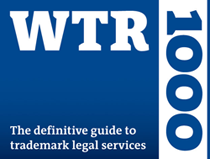Intellectual Property Insights from Fishman Stewart PLLC
Newsletter – Volume 22, Issue 12
Share on Social

The Death of Winnie-the-Pooh (As We Knew Him)
On January 1, 2022 – known in the copyright world as “Public Domain Day” – many works created in 1926 entered the public domain as we discussed in a previous Fish Tank newsletter. U.S. copyright laws provide authors exclusive rights to their creative works for a limited time, after which the works fall into the public domain. Once a work enters the public domain, anyone is free to copy, publish, distribute, adapt and otherwise use the work without infringing the rights of the former copyright owner. Among the most exciting works to enter the public domain this year is the original Winnie-the-Pooh book and character. Many artists are taking full advantage of this development and creating new interpretations of the beloved character.
Winnie-the-Pooh began life in 1924 as Edward Bear in the 1924 story When We Were Very Young. He was the brainchild of author A. A. Milne and brought to life by illustrator E. H. Shepard. Milne developed Winnie-the-Pooh’s identity and story in his 1926 book Winnie-the-Pooh. The copyrights in those 1926 and prior works have expired, and the stories and characters in them have fallen into the public domain. However, the copyrights in the post-1926 works, including those developed by Disney, will remain under copyright protection for a few more years. Disney licensed film and other rights from Milne’s estate in the 1960s and expanded the Winnie-the-Pooh world in movies, books, games, and merchandise. Disney first released its adaptation of Winnie-the-Pooh in 1966, and that version of Pooh will remain under copyright protection for several more decades.
Since Milne’s original Winnie-the-Pooh story and its original characters fell into the public domain six months ago, many have taken full advantage of the ability to create new works, publish, distribute, and otherwise use those works without the need to first obtain a license or permission from the once copyright owner. Pooh has already appeared in a Mint Mobile commercial featuring actor Ryan Reynolds.
Winnie-the-Pooh and Piglet are also set to star in an upcoming live action horror film titled Winnie the Pooh: Blood and Honey. The film’s writers have reimagined Pooh and Piglet in a world where Christopher Robin has grown up and gone to college, leaving them to fend for themselves. A starving Pooh and Piglet have reverted to their natural states, hunting prey to survive. Poor Eeyore! A reunion with Christopher Robin leads to rage and a murderous rampage.
Navigating the right to use Milne’s characters without infringing existing intellectual property rights will undoubtedly be challenging. The copyright to A.A. Milne’s original story and characters are in the public domain, however, the characters and stories introduced after 1926 are not. Tigger was introduced in the 1928 book The House at Pooh Corner, and he still remains under copyright protection.
This patchwork of public domain material and copyrights creates a minefield for anyone trying to create a coherent storyline while not infringing a third party’s rights. The filmmakers of Winnie the Pooh: Blood and Honey acknowledged this challenge in a recent interview with Variety. In Winnie the Pooh: Blood and Honey, Pooh wears red lumberjack clothing; a likely homage to the red t-shirt Pooh first wore in a 1932 Parker Brothers board game, and included in Disney’s interpretation of the character.
To complicate matters further, Disney holds trademark registrations for WINNIE THE POOH for movies, books, video games and a wide variety of Pooh-themed merchandise. The title of a single creative work, such as a movie, may not infringe another’s trademark rights. However, using Winnie-the-Pooh for a series of movies, or other creative works, and selling merchandise associated with the works may create conflict.
Some view the appearance of Winnie-the-Pooh in a slasher film in horror. Some look forward to the new creativity that Pooh will generate for decades to come. We will get our popcorn ready while we wait and see if Disney, or any other rights holders, bring legal challenges.
Published June 10, 2022

Partner Barbara Mandell featured by Insider
Related Content from Fishman Stewart
Car enthusiasts are buzzing about Alfa Romeo's latest SUV which is also its first EV (plus a hybrid option). Initially branded as “Milano,” the name was changed to "Junior" after it was announced that the car would be produced in Poland.
The online word game Wordle was created in 2021 by Josh Wardle and quickly rose in popularity. Players receive a new puzzle daily with six chances to correctly guess a five-letter word of the day with limited clues.
In a recent decision, the U.S. Court of Appeal for the Eighth Circuit affirmed a jury verdict holding that the use of the "Success Kid" meme by a congressman's reelection campaign for fundraising purposes did not qualify as fair use.
In February 2024, proposed legislation was introduced in US House of Representatives which would extend copyright protection to golf courses. The bill is titled “Bolstering Intellectual Rights against Digital Infringement Enhancement Act” or the “BIRDIE Act”.
OpenAI recently held a live demonstration of a new ChatGPT version that included the use of an AI personal assistant voice dubbed “Sky.” Many observers compared Sky to Scarlett Johansson’s voice in the 2013 Spike Jonze romantic sci-fi film “Her,” which centers on a man who falls in love with the female voice of his computer’s operating system.
June is Pride Month, which honors the 1969 Stonewall Uprising in Manhattan and recognizes the impact that lesbian, gay, bisexual, and transgender (LGBTQ+) individuals have had on history locally, nationally, and internationally. The United States Patent and Trademark Office flies the Pride Flag and promotes the Pride community’s contributions with programming offered annually.
First-time inventions have led inventors to great successes throughout history, sometimes immediately, sometimes after several more attempts at more useful inventions. In the U.S., two very famous inventors with contrasting first-time experiences are Thomas Edison and Alexander Graham Bell.
June is Pride Month. This year we are celebrating with some IP tips for drag performers! Drag performers can protect their intellectual property by registering the copyrights in their original works of music, choreography, and comedy sketches.
Bands often start out as creative endeavors among friends, and bands may not prove lucrative for many years, if at all. Until bands break up, thought and planning may not be given to who is the owner of the band names and entitled to use them going forward.
You’re rarely more than a few yards from Finny’s favorite chips, semiconductor chips to be precise. But what exactly is a semiconductor chip?
IDENTIFYING, SECURING AND ADVANCING CREATIVITY®

















